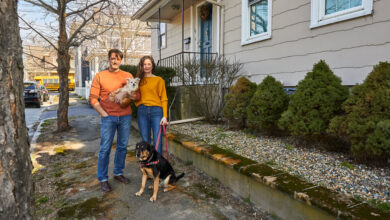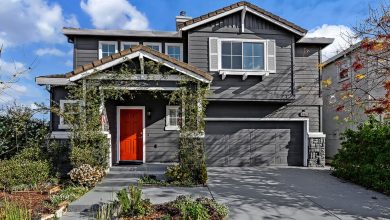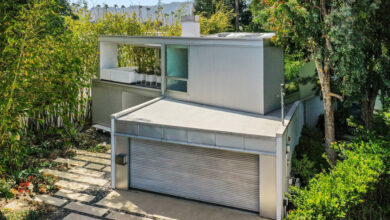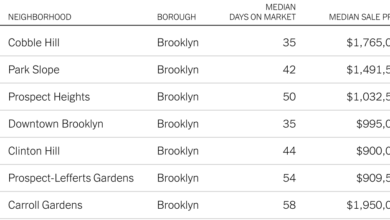If You Stop Mowing This May, Will Your Lawn Turn Into a Meadow?
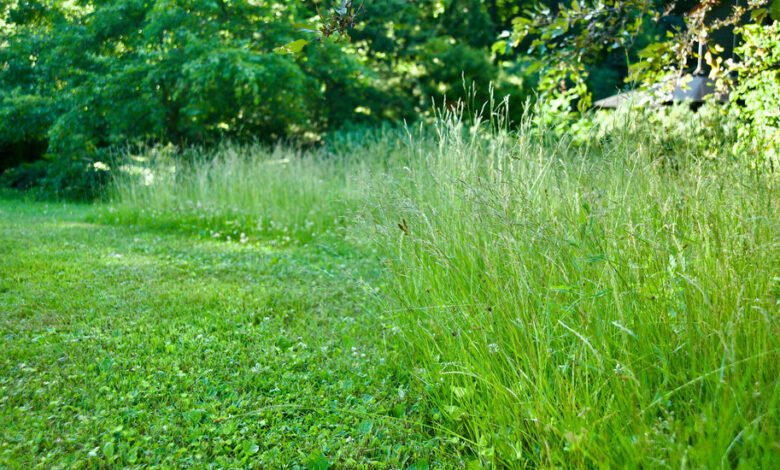
[ad_1]
It’s No Mow May, time for the annual campaign that advocates just what it says: Skip mowing the lawn this month, in the name of providing additional resources for early-season pollinators.
I take a slightly different approach. One day during the first week of May is the only time all year that I actually do mow several increasingly large swaths of my property.
My philosophy? No Mow 364 Days, I guess you could say.
I started growing my first little meadow about 30 years ago, and since then I have stopped cutting a few other areas, too, except for that one day a year.
In each space, new species keep showing up. They’re not all desirable, admittedly, as I have made very clear repeatedly, in rude language, to the brambles encroaching on the oldest, largest area. They fight back in their own way, their thorns drawing blood. Mine.
Woody invaders and all, these wilder portions of my place have been the site of a decades-long continuing-education course in the early stages of ecological succession — and a four-season delight to me and a diversity of wildlife.
I just wish I’d had an operator’s manual when I started. Two recently published books can provide that for gardeners who are rethinking their landscapes, by helping them maintain realistic expectations while they’re transitioning to a wilder style — and facing what can sometimes feel like spontaneity incarnate.
“Every lawn is a prairie screaming to come out of the ground,” said Benjamin Vogt, the Nebraska-based designer who owns Monarch Gardens, when he joined me on my podcast not long ago to talk about his 2023 book, “Prairie Up: An Introduction to Natural Garden Design.”
“Nature wants to be diverse and abundant,” echoed Owen Wormser, of Abound Design, on another podcast episode coinciding with the release of the updated edition of his 2020 “Lawns Into Meadows: Growing a Regenerative Landscape.” “Ultimately, plants just show up.”
“As caretakers, we have the ability to steer this to some degree,” added Mr. Wormser, who is based in Western Massachusetts. “But the idea is to also let the plants and the site and nature steer it, as well. It’s a collaboration.”
Both books guide us through planning, site preparation and aftercare. They also stress what may be the most important lesson of all: You need to cultivate patience as intently as you cultivate your looser new patch of ground — lots of it. Just as your planting style will be more relaxed, your mind-set around tidiness, order and timing must ease up, too.
“We’re letting plants guide the way, guide the management, show us where they want to be and how they want to be,” Mr. Vogt told me. “And even if they want to vanish completely — and that’s totally OK — we like that dynamic in the landscape. We want to see things changing.”
As Mr. Wormser writes, “Part of establishing a meadow is also a lesson in letting go. Basic maintenance aside, once you’ve designed and planted your meadow, your primary job is to give it the space and time it needs to reveal its own character.”
The Right Plants
I garden in a rural area, and my home landscape sits on a remnant of an orchard and pasture that were there long before I arrived. Years ago, examining a grassy area uphill from my house, I was encouraged by the presence of a few key native plants I recognized. Thinking they would make good meadow ingredients, I simply stopped mowing and watched what happened.
My only mowing is timed for early May, because one plant I identified in the mix was little bluestem (Schizachyrium scoparium), a grass that is a warm-season grower. It emerges slightly later than most of the nonnative, cool-season pasture grasses around it. By mowing after those less-desirable species have sprouted but just before the bluestem arises, I knock them back, giving it the edge.
In a conventional turf-grass lawn in the suburbs, this practice that I call “unmowing” probably wouldn’t work. A meadow-style design — or one inspired by other grassland communities like prairie or savanna — would have to be intentionally planted.
Choosing plants based on their looks or your hardiness zone isn’t enough, both authors stress. You must identify regionally (or even better, locally) appropriate natives that match your particular site conditions.
“Zone 5 in New York State is not the same as Zone 5 in Colorado, particularly when working with native plants,” Mr. Vogt writes. The minimum winter temperatures may be similar, but the climates and plant communities are not.
Rather than using the Department of Agriculture’s hardiness zone maps, he starts with the Environmental Protection Agency’s Level III Ecoregions maps, to learn more about the greater ecosystem a property lies within.
Next, he turns to native-plant search tools and guides on websites like Pollinator Partnership, Audubon, Xerces Society or National Wildlife Federation that offer lists of regional natives. Not all of them will be suited to your design concept, precise location or site conditions, though, so that’s when the homework really begins.
Narrow the possibilities by reading up on each plant, Mr. Vogt advised. A regional field guide to natives is another good tool. Your state or local native-plant society will have valuable resources to explore, too.
Maybe no plant choices are more important than which grasses to use.
“Since grasses ground a meadow visually and are the dominant plants, choose them first,” Mr. Wormser writes. He typically incorporates one or two clump-forming, warm-season grasses into a small-scale design (or up to four in a large project), which form “the backbone of my meadows.”
Another consideration in refining your palette: To create nature-inspired designs, Mr. Vogt suggests thinking in layers, the way nature’s plant communities are structured. That means employing plants of various scales, from ground covers like sedges (Carex) and structural ones that fill the middle level, like mountain mint (Pycnanthemum virginianum), to taller, architectural types, like ironweed (Vernonia).
He also recommends selecting for layers of seasonality — striving for continued visual appeal and sustained support for beneficial insects, birds and other wildlife.
“A natural garden has several plants at each layer,” he writes, “as well as plants doing their thing at different times of year.”
Pros and Cons in Each Site-Preparation Style
So far, my own “bed preparation” in each experiment has been nothing more than deciding what shape to leave unmown. But most gardeners will need to prepare their sites for planting, and both books lay out the options.
A site that has been cleared of vegetation is usually the ideal starting point, they agree. But how best to get there: with repeated tillings over many months or an application of herbicide? Or perhaps via the seemingly instant gratification of a rented sod stripper’s mechanical handiwork? Or maybe you could use cardboard to smother the proposed plot, or solarize the underlying vegetation with plastic sheeting?
There are ethical considerations — and practical ones. For instance, although stripping the sod allows you to plant the same day, the weed seeds in the underlying soil will germinate once they have been exposed to light. A late-summer or early-fall herbicide application may go against the organic gardener’s grain, but the dead lawn that results makes a good base to sow seed into, without the tilling that could uncover those weed seeds.
The Expectations Agreement
Whether to sow seed, plant landscape plugs or use a mixture of both is another decision that has to be made. Cost is a factor, and so is time — and time may be the biggest point of reckoning.
A completely seed-sown meadow can take four or more years to come together, Mr. Vogt said. If you’re using all plugs, it takes two to three years; with a mixture of the two, it takes about four.
In the meantime, a nurse crop — often an annual grass like rye or other annuals “for first-year green and color,” he writes — can help visually, and will limit weeds while the seed-sown perennials take hold. But it won’t be the “after” picture you had in mind. Not yet.
That’s why he has his clients sign what he calls “an expectations agreement” before beginning a project: He wants them to acknowledge that some growing pains lie ahead, and that there is no point of fixity when it will be “all done.”
Change has surely been the one constant in my meadow experience. I now count five species of goldenrod (Solidago) — where did they all come from? What about the invasion of weeds, including that thorny Rubus? Do I pull or dig them up, risking soil disturbance that might unearth who knows what? My once-yearly mowing no longer subdues the brambles as it did years ago.
“A lot of this is experimentation, and really just seeing what happens,” Mr. Wormser told me. “If you’re skeptical about something like pulling blackberries, maybe just pull one and see what happens in a month or two.”
What is most reassuring about these new guidebooks is that neither author, despite his considerable depth of experience, pretends to have all the answers. Bigger forces are at work, as anyone ready to skip mowing 364 days a year will come to understand. This is a different kind of gardening.
“You can plan for every contingency with your site prep and design,” Mr. Wormser writes, “but nature will have the last word.”
Margaret Roach is the creator of the website and podcast A Way to Garden, and a book of the same name.
For weekly email updates on residential real estate news, sign up here.
[ad_2]
Source link


